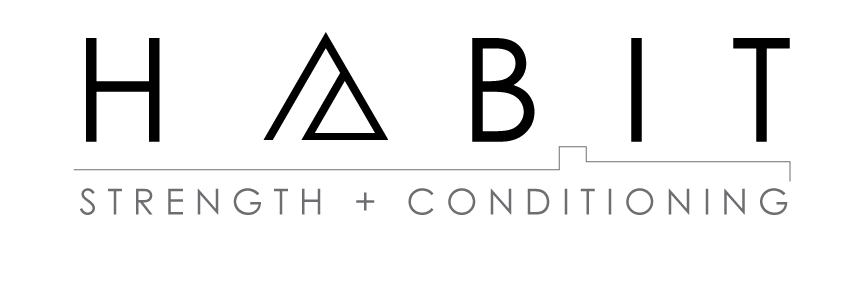The King/Queen of Lifts; the DEADLIFT. Although it may have an intimidating name, this movement is applicable in many ways. We perform it when we pickup a heavy load from the floor, whether it be one end of a couch or a barbell loaded with plates. A deadlift is a great way to gain strength + power, to train your hamstrings, glutes, back + core and to help improve muscles used for good posture.
Have a look at the video below where Coach Steff and Coach Pat illustrate a proper deadlift:
In this case, we are exploring the preparation for a CONVENTIONAL DEADLIFT; one in which our feet are set slightly inside your grip on the barbell. There are various ways to perform other styles of deadlift, but the following steps outline the process for the conventional deadlift movement. Take a read:
Set your feet Begin with your feet directly below your hips; some people stand wider or slightly more narrow, but this is a good way to start. Be sure your entire foot is in conflict with the floor but you can focus your weight distribution into your heels.
Rotate your pelvis back and push your rear toward the wall behind you. We often use the hip queue "Donald Duck", where your inspiration comes from a scoop or flattened lower back and booty pressed backward.
Pull bar to shins To be most efficient with a barbell lift, we need to be thoughtful about where the path of the bar goes. Keeping the bar close to the center of your body (or in this case up against your shins and eventually your quads) keeps the bar in the most effective position. This will also help keep your knees vertically stacked above your ankles, also keeping them safe.
Engage your back Although the deadlift is largely a leg-dominant movement, keeping your back engaged is a big part of the deadlift. We're focused on NOT bending much in your back and to do so, keep your back muscles engaged. Think about squeezing the back side of your armpits/pinch a pencil placed in the back of your armpits to help engage your lats to continue stabilizing your back.
Take a full belly-breath Power of proper breathing is critical in a deadlift (and most movements). Take a breath into your belly, not just your chest. Now, hold it and think about pressing the air behind your abdominal muscles to help support them. This helps to engage your core; your abs, your obliques and low back.
Stand and tuck pelvis Pressing into the floor to extend your legs long, stand up! At the top, tuck your hips under, rotating your pelvis forward into the opposite hip queue, "Pink Panther". Your glutes should be squeezed tight to control the movement at the top. Enjoy! You are almost there!
Controlled decent Although not all coaches find this as important, we queue athletes to control their barbells to the floor. Not only does it demonstrate control, in many competitions it is required and you can gain more from a lift by spending a bit more time under tention where your body is still engaged. It also is incredibly helpful when performing multiple reps.
Deadlifts can be varied, especially based on your anatomy and the proportions of your body. Each of our lifts may look different from someone else's, but our goal here is to help you build your lifting patterns for a consistent deadlift and feeling confident + safe with the barbell in your grip. If you have questions about the tips or guidance we've outlined, please don't hesitate to ask Coach Patrick or Coach Steffany for more information. We are happy to help!
